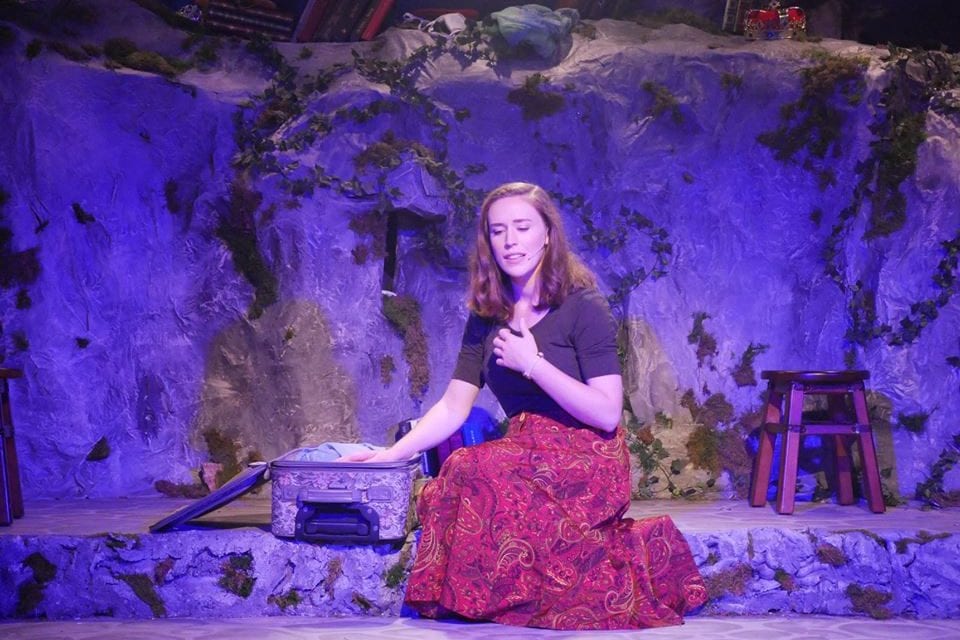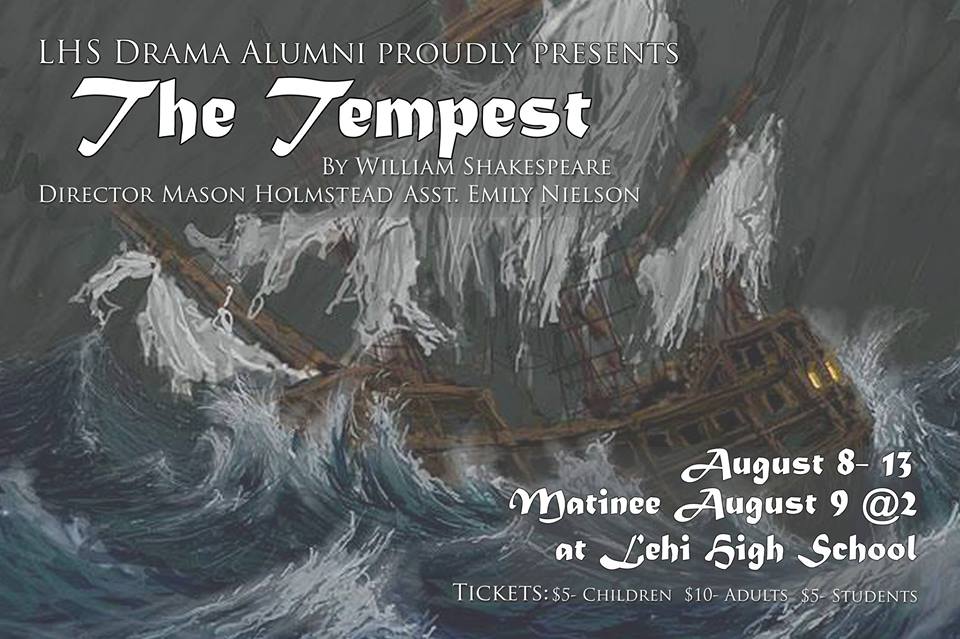PROVO — Mina stands at the cusp of a difficult life decision that will determine who she is. As she contemplates her momentous decision, her Italian confidant Paolo, says, “Now is when your ‘Once upon a time’ begins.”

Show closes October 27, 2018.
The phrase “Once upon a time” occurs frequently in The Bookbinder’s Tale, a new play by Bo Wilson about the importance and power of stories. In the story, Mina starts as an adult education instructor at the local university after her fiancé Rupert, a rising literary criticism professor, pulls some strings. Much to Mina’s dismay, her only student is artist-in-residence Paolo, who is a manuscript and book preservationist. Paolo convinces Mina to teach the class anyway, even though the university won’t pay her to teach a class with just one enrolled student. As they meet and exchange stories, Mina realizes that she is unhappy in her relationship with Rupert, and a love triangle soon develops.
Mariah Bowles has a nuanced performance as Mina, and I enjoyed watching Mina’s journey of self-discovery. The growing unease around Rupert, the uncertainty Mina felt about who she was, and the character’s tenderness were all examples of Bowles’s ability to create a realistic, multifaceted character. It was easy to sympathize especially with Mina when she tried to explain to Rupert her dissatisfaction without appearing ungrateful for all he had done for her.

Left to right: Jonathan Fifield as Paolo, Benjamin Hyde as Rupert (standing), and Mariah Bowles as Mina.
As Paolo, Jonathan Fifield had an unstoppable charm that made it easy to see how Mina could unintentionally fall in love with Paolo. Fifield helped ease the transition from reality to story because Paolo’s enthusiasm and energy naturally propelled the other characters into the tales he was telling. Moreover, Fifeld had an impeccable Italian accent that never relied on ethnic stereotypes. The most important aspect of Fifield’s performance, though, was his natural ease with Bowles, and the way their dialogue flowed easily made both performances believable.
The final member of the cast, Benjamin Hyde, was less convincing in the role of Rupert. Hyde should have done more to vary his performance. Whether he was discussing university policies or arguing with Mina, Rupert’s mannerisms and voice stayed mostly the same. This made it difficult to ascertain Rupert’s emotional state, and made Mina’s unhappiness with their relationship seem less drastic to him. To be fair, Rupert is the most challenging role of the three; the script can’t make him an abusive ogre because then it would be obvious that Mina should leave. If Rupert is kind and angelic, then Mina is the monster for thinking of leaving him. Any actor playing the role would face a challenge in finding the right balance to the character.
Directing these three actors was Diedra Celeste Miranda, who is a master of pacing. Thanks to the rapid-fire dialogue and the smooth transition between story and reality, the 95 minutes of The Bookbiner’s Tale flew by. The stories in the script have the risk of being tedious, but Miranda kept them visually interesting by changing up the staging from story to story and reserving the upstage center portion of the stage for the most fantastical events in the stories. I also appreciated Miranda’s stage pictures, especially when two characters connected to one another through a map. The moment was equally surprising and romantic and a welcomed highlight of act two.
I appreciated the attention to detail in all the technical elements of the play. Madeline Ashton‘s set design was perfect for a story where the boundary between fantasy and reality is not always clear, and I loved how the exquisitely detailed cave portion seemed to intrude on the modern set pieces that represented Rupert and Mina’s home or the college classroom. It was almost like the earth had vomited the cave into their lives, or like the contradictions of magical realism had become physical. Robert Murdock’s lighting was flattering for both the set and the actors, and the soft transitions from portions that mimicked natural light to artificial lighting supported the transitions from one environment to another that frequently occur in the script. Even the props (no propmaster credited) were carefully selected to be appropriate for the characters; Paolo’s bottle of wine and the trouble to use a corkscrew on a pocketknife to remove a real cork was a small touch of realism that helped bring the situation to life.
As a world premiere, Wilson’s script bears discussion. The story is engrossing, and the characters are people that I enjoyed spending an evening with. Wilson was superb at creating an internal conflict for Mina, and I found Mina’s choices satisfying because of the way it bestowed dignity on the character. The only major drawback I found was that the story about a savior becoming a victim unsubtle because its applicability to Mina’s situation was so blindingly obvious. Additionally, efforts to make the script less generic would be nice. When Rupert mentioned a cabin in Alberta, or Paolo mentioned his home in Milan, the context of the story felt real. But these moments were rare. The university where Rupert worked was never mentioned, nor was the town the characters lived in. As a result, the main characters lacked a connection to the real world, which they needed to sharpen the contrast with the stories they told.
But The Bookbinder’s Tale was an evening well spent. This is The Hive Collaborative’s second production, and it bodes well for their future efforts in the intimate 76-seat space. At a time of year when Utah theatre options are dominated by Halloween shows, The Bookbinder’s Tale is an enjoyable option about real people with real problems, but who can learn the lessons that stories can teach.





